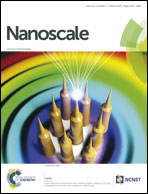Defect-related ferromagnetism in ultrathin metal-free g-C3N4 nanosheets†
Abstract
Ultrathin metal-free g-C3N4 nanosheets with intrinsic room temperature ferromagnetism were synthesized by heating urea in an airtight container at different temperatures. Results indicate that the samples' saturation magnetization increases with the carbon defect concentration, revealing its carbon defect related ferromagnetism. Moreover, we further confirmed the defect induced ferromagnetic nature by ab initio calculations. It is believed that this finding highlights a new promising material toward realistic metal-free spintronic application.


 Please wait while we load your content...
Please wait while we load your content...